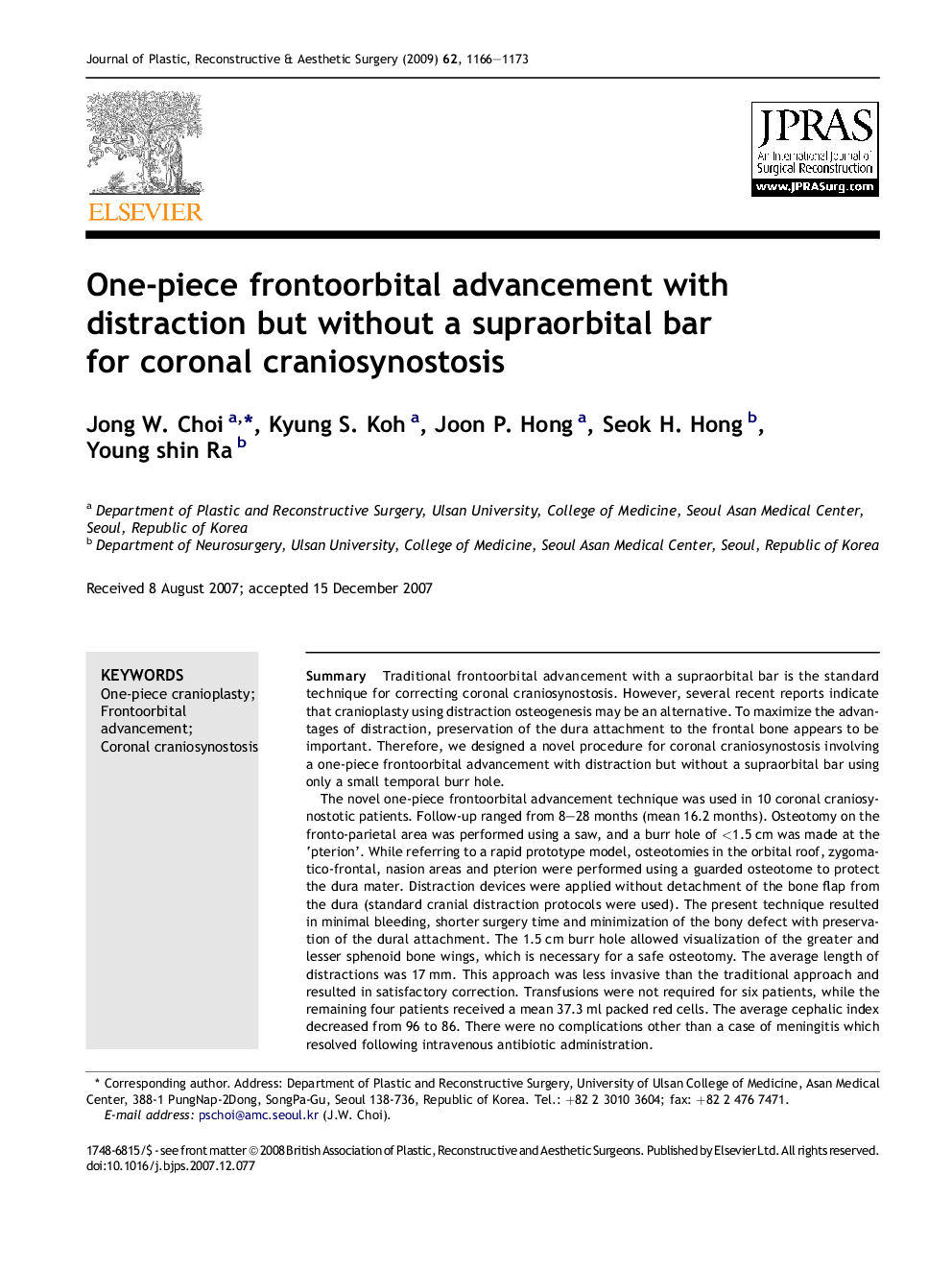| Article ID | Journal | Published Year | Pages | File Type |
|---|---|---|---|---|
| 4120265 | Journal of Plastic, Reconstructive & Aesthetic Surgery | 2009 | 8 Pages |
SummaryTraditional frontoorbital advancement with a supraorbital bar is the standard technique for correcting coronal craniosynostosis. However, several recent reports indicate that cranioplasty using distraction osteogenesis may be an alternative. To maximize the advantages of distraction, preservation of the dura attachment to the frontal bone appears to be important. Therefore, we designed a novel procedure for coronal craniosynostosis involving a one-piece frontoorbital advancement with distraction but without a supraorbital bar using only a small temporal burr hole.The novel one-piece frontoorbital advancement technique was used in 10 coronal craniosynostotic patients. Follow-up ranged from 8–28 months (mean 16.2 months). Osteotomy on the fronto-parietal area was performed using a saw, and a burr hole of <1.5 cm was made at the ‘pterion’. While referring to a rapid prototype model, osteotomies in the orbital roof, zygomatico-frontal, nasion areas and pterion were performed using a guarded osteotome to protect the dura mater. Distraction devices were applied without detachment of the bone flap from the dura (standard cranial distraction protocols were used). The present technique resulted in minimal bleeding, shorter surgery time and minimization of the bony defect with preservation of the dural attachment. The 1.5 cm burr hole allowed visualization of the greater and lesser sphenoid bone wings, which is necessary for a safe osteotomy. The average length of distractions was 17 mm. This approach was less invasive than the traditional approach and resulted in satisfactory correction. Transfusions were not required for six patients, while the remaining four patients received a mean 37.3 ml packed red cells. The average cephalic index decreased from 96 to 86. There were no complications other than a case of meningitis which resolved following intravenous antibiotic administration.The present novel technique appears to be a good alternative surgical approach for treating non-complex forms of single suture coronal craniosyntosis.
